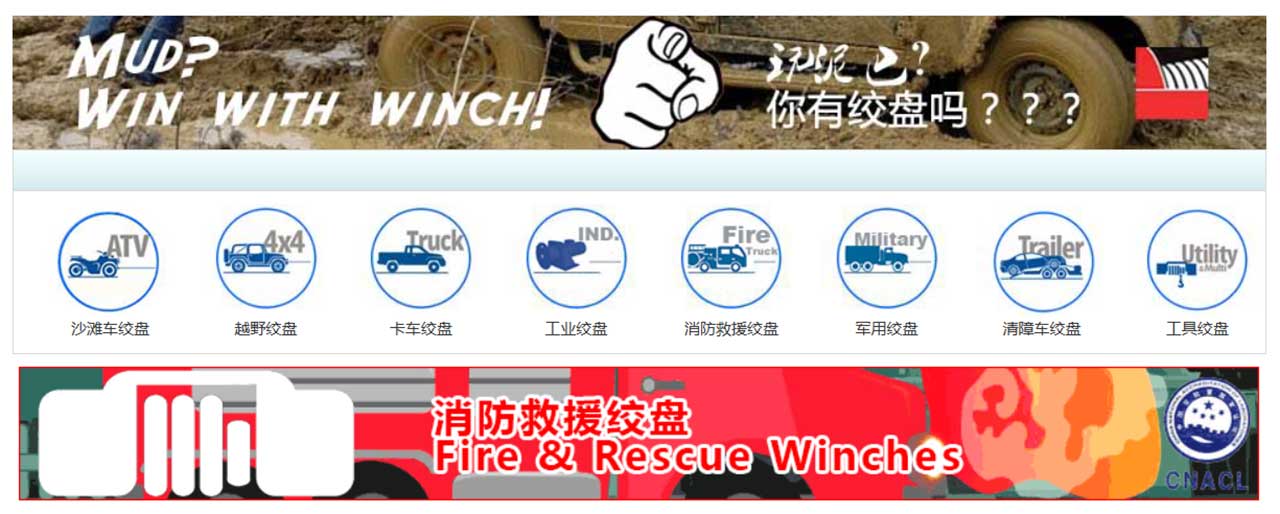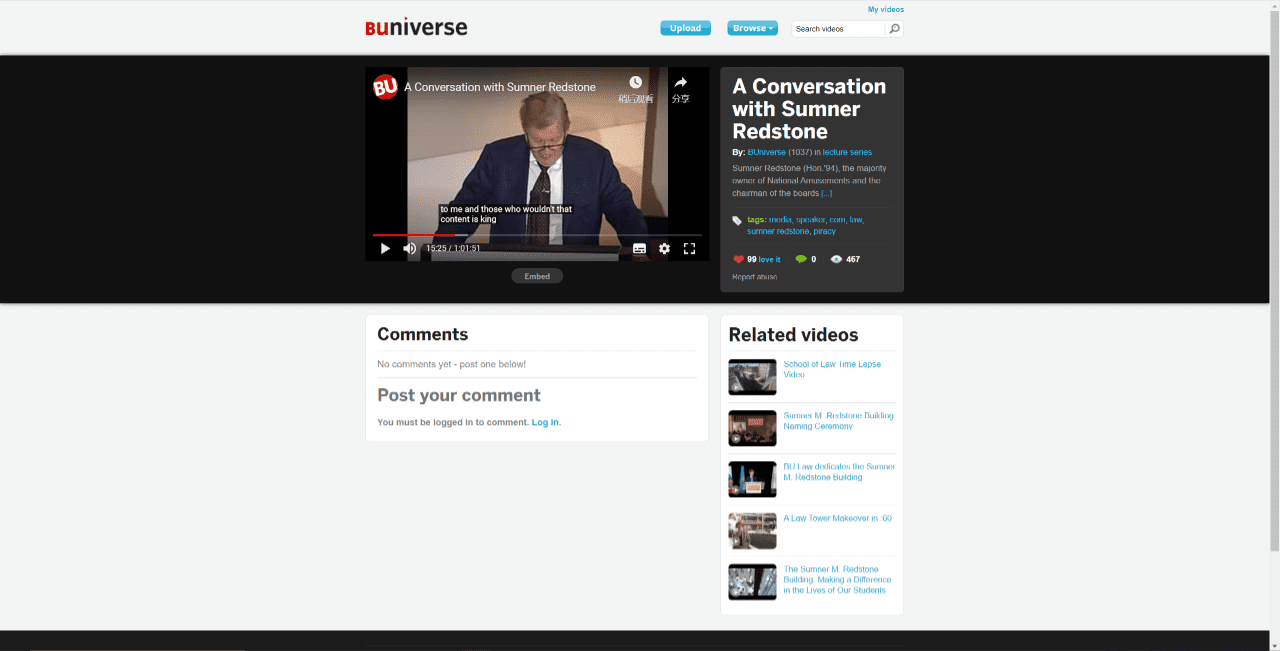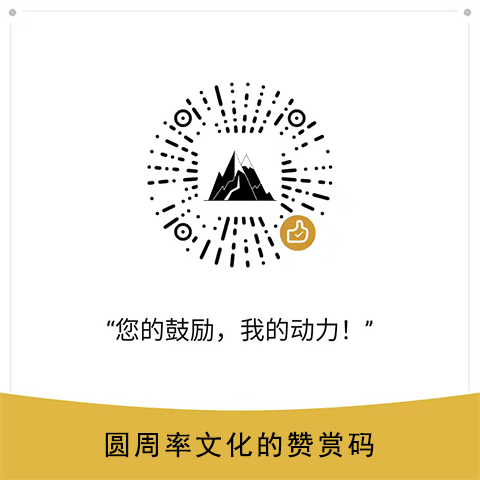
通常认为,“内容为王(Content is king)”这个概念来自于比尔·盖茨(Bill Gates)1996年1月的一篇文章《Content is king》,“内容是我希望真正的钱将在互联网上赚到的地方,就像广播一样”。它的原文及译文附后。

via https://www.craigbailey.net/content-is-king-by-bill-gates/
但挖坟者表示,维亚康姆(Viacom)总裁雷石东(Sumner M. Redstone)2007年在波士顿大学法学院礼堂的一次演讲中谈到自己在1990年代中期声明“内容为王”,但是在数字时代,版权才是最重要的,这被认为是“内容为王”这个概念的最初起源。他当时决定公司的发展战略是成为全球最重要的内容供应商,“谁做传送不管,我就是要放上最好的内容,传媒企业的基石必须而且绝对必须是内容,内容就是一切”。

A Conversation with Sumner Redstone
By: buniverse (1033) in lecture series
http://www.bu.edu/buniverse/view/?v=a0R7b5b

Sumner Redstone (Hon.'94), the majority owner of National Amusements and the chairman of the boards of Viacom, the CBS Corporation, and the MTVi Group, speaks at the School of Law about the challenges of keeping a media company profitable in the digital age. Best known for his mid-1990s statement "Content is king," Redstone discusses the ongoing threat of content piracy and offers a "digital manifesto" for the long-term success of both artists and media companies: collaboration between major media corporations in the fight against piracy and intellectual property theft.
Hosted by Boston University School of Law and College of Communication on September 18, 2007.
——Best known for his mid-1990s statement "Content is king",波士顿大学在次日的一篇新闻稿《How iTunes Saved the Music Industry》中也有类似介绍。“我曾经说内容为王。我告诉你,还有另一个国王:消费者。”这也为后来的内容营销者提供了黄金建议。
Who Says “Content is King” and Why?
Tad Chef 在 The Content Monarchy: Who Says “Content is King” and Why? 一文中更全面地展示了内容为王这个概念的发展路径,指出,不论是维亚康姆、微软、新闻集团还是谷歌,或者内容农场及SEOer,都希望通过内容获得关注和收益。并且,2001年出现的“内容营销”(The History of Content Marketing 介绍了内容营销的历史),将新闻、播客、博客文章、图片、表格、电子书、白皮书、新闻稿、案例研究、操作指南、视频、访谈等众多格式信息应用于在线目标受众。

via https://contentmarketinginstitute.com/2016/07/history-content-marketing/
CONTENT IS KING – BILL GATES (1/3/1996)
Microsoft 原文,但仅可通过 archive.org 回顾,并参考:
https://www.craigbailey.net/content-is-king-by-bill-gates/
https://www.justice.gov/sites/default/files/atr/legacy/2006/03/03/20.pdf
Content is where I expect much of the real money will be made on the Internet, just as it was in broadcasting.
The television revolution that began half a century ago spawned a number of industries, including the manufacturing of TV sets, but the long-term winners were those who used the medium to deliver information and entertainment.
When it comes to an interactive network such as the Internet, the definition of “content” becomes very wide. For example, computer software is a form of content-an extremely important one, and the one that for Microsoft will remain by far the most important.
But the broad opportunities for most companies involve supplying information or entertainment. No company is too small to participate.
One of the exciting things about the Internet is that anyone with a PC and a modem can publish whatever content they can create. In a sense, the Internet is the multimedia equivalent of the photocopier. It allows material to be duplicated at low cost, no matter the size of the audience.
The Internet also allows information to be distributed worldwide at basically zero marginal cost to the publisher. Opportunities are remarkable, and many companies are laying plans to create content for the Internet.
For example, the television network NBC and Microsoft recently agreed to enter the interactive news business together. Our companies will jointly own a cable news network, MSNBC, and an interactive news service on the Internet. NBC will maintain editorial control over the joint venture.
I expect societies will see intense competition-and ample failure as well as success-in all categories of popular content-not just software and news, but also games, entertainment, sports programming, directories, classified advertising, and on-line communities devoted to major interests.
Printed magazines have readerships that share common interests. It’s easy to imagine these communities being served by electronic online editions.
But to be successful online, a magazine can’t just take what it has in print and move it to the electronic realm. There isn’t enough depth or interactivity in print content to overcome the drawbacks of the online medium.
If people are to be expected to put up with turning on a computer to read a screen, they must be rewarded with deep and extremely up-to-date information that they can explore at will. They need to have audio, and possibly video. They need an opportunity for personal involvement that goes far beyond that offered through the letters-to-the-editor pages of print magazines.
A question on many minds is how often the same company that serves an interest group in print will succeed in serving it online. Even the very future of certain printed magazines is called into question by the Internet.
For example, the Internet is already revolutionizing the exchange of specialized scientific information. Printed scientific journals tend to have small circulations, making them high-priced. University libraries are a big part of the market. It’s been an awkward, slow, expensive way to distribute information to a specialized audience, but there hasn’t been an alternative.
Now some researchers are beginning to use the Internet to publish scientific findings. The practice challenges the future of some venerable printed journals.
Over time, the breadth of information on the Internet will be enormous, which will make it compelling. Although the gold rush atmosphere today is primarily confined to the United States, I expect it to sweep the world as communications costs come down and a critical mass of localized content becomes available in different countries.
For the Internet to thrive, content providers must be paid for their work. The long-term prospects are good, but I expect a lot of disappointment in the short-term as content companies struggle to make money through advertising or subscriptions. It isn’t working yet, and it may not for some time.
So far, at least, most of the money and effort put into interactive publishing is little more than a labor of love, or an effort to help promote products sold in the non-electronic world. Often these efforts are based on the belief that over time someone will figure out how to get revenue.
In the long run, advertising is promising. An advantage of interactive advertising is that an initial message needs only to attract attention rather than convey much information. A user can click on the ad to get additional information-and an advertiser can measure whether people are doing so.
But today the amount of subscription revenue or advertising revenue realized on the Internet is near zero-maybe $20 million or $30 million in total. Advertisers are always a little reluctant about a new medium, and the Internet is certainly new and different.
Some reluctance on the part of advertisers may be justified, because many Internet users are less-than-thrilled about seeing advertising. One reason is that many advertisers use big images that take a long time to download across a telephone dial-up connection. A magazine ad takes up space too, but a reader can flip a printed page rapidly.
As connections to the Internet get faster, the annoyance of waiting for an advertisement to load will diminish and then disappear. But that’s a few years off.
Some content companies are experimenting with subscriptions, often with the lure of some free content. It’s tricky, though, because as soon as an electronic community charges a subscription, the number of people who visit the site drops dramatically, reducing the value proposition to advertisers.
A major reason paying for content doesn’t work very well yet is that it’s not practical to charge small amounts. The cost and hassle of electronic transactions makes it impractical to charge less than a fairly high subscription rate.
But within a year the mechanisms will be in place that allow content providers to charge just a cent or a few cents for information. If you decide to visit a page that costs a nickel, you won’t be writing a check or getting a bill in the mail for a nickel. You’ll just click on what you want, knowing you’ll be charged a nickel on an aggregated basis.
This technology will liberate publishers to charge small amounts of money, in the hope of attracting wide audiences.
Those who succeed will propel the Internet forward as a marketplace of ideas, experiences, and products-a marketplace of content.
内容为王 – 比尔·盖茨 (1/3/1996)
谷歌翻译
内容是我希望真正的钱将在互联网上赚到的地方,就像广播一样。
半个世纪前开始的电视革命催生了许多行业,包括电视机制造,但长期的赢家是那些使用媒体提供信息和娱乐的人。
当涉及 到诸如Internet之类的交互式网络时,“内容”的定义变得非常广泛。例如,计算机软件是一种内容形式,这是一种非常重要的内容,而对于Microsoft而言,它仍然是迄今为止最重要的一种形式。
但是,对于大多数公司而言,广泛的机会涉及提供信息或娱乐。没有一家公司太小而无法参与。
互联网令人兴奋的事情之一是,任何拥有PC和调制解调器的人都可以发布他们可以创建的任何内容。从某种意义上说,互联网相当于影印机的多媒体功能。无论观众多大,它都可以低成本复制材料。
互联网还允许信息以基本上零的边际成本在全球范围内分发给发布者。机会是巨大的,许多公司正在制定计划来创建Internet内容。
例如,电视网络NBC和微软最近同意共同进入交互式新闻业务。我们的公司将共同拥有有线电视新闻网,MSNBC和Internet上的交互式新闻服务。NBC将保持对该合资企业的编辑控制权。
我希望社会在所有受欢迎的内容类别中都将看到激烈的竞争,失败和成功,不仅是软件和新闻,而且包括游戏,娱乐,体育节目,目录,分类广告以及致力于以下内容的在线社区:主要利益。
印刷杂志的读者有共同的兴趣。不难想象,这些社区都由在线电子版本提供服务。
但是,要想在网上获得成功,杂志不能仅仅将其印刷品转移到电子领域。打印内容的深度或交互性不足以克服在线媒体的缺点。
如果希望人们忍受打开计算机阅读屏幕的烦恼,则必须给他们以深厚而最新的信息,他们可以随意探索,从而获得回报。他们需要有音频,可能还有视频。他们需要一个个人参与的机会,这要远远超出印刷杂志的“致编辑的信”页面所提供的机会。
在许多人看来,一个问题是,服务于印刷兴趣小组的同一家公司多久会成功地在线为其提供服务。甚至某些印刷杂志的未来也受到互联网的质疑。
例如,互联网已经在彻底改变专业科学信息的交换。印刷科学期刊的发行量往往很小,因此价格很高。大学图书馆是市场的重要部分。向专业受众分发信息是一种笨拙,缓慢,昂贵的方法,但是没有其他选择。
现在,一些研究人员开始使用互联网发表科学发现。这种做法挑战了一些古老的印刷期刊的未来。
随着时间的流逝,互联网上信息的广度将是巨大的,这将使其具有吸引力。尽管当今的淘金热氛围主要限于美国,但我希望随着通讯成本的下降以及不同国家/地区大量可用的本地化内容,它席卷全球。
为了使互联网蓬勃发展,内容提供商必须为其工作付费。长期前景良好,但我希望短期内会感到失望,因为内容公司正努力通过广告或订阅赚钱。它尚无法使用,并且可能有一段时间没有使用。
到目前为止,至少,投入到交互式出版中的大部分金钱和精力不过是热爱劳动,或者是帮助推广非电子产品销售的努力。通常,这些努力是基于这样的信念,即随着时间的推移,有人会想出如何获得收入的。
从长远来看,广告是有希望的。交互式广告的一个优点是,初始消息只需要引起注意即可,而无需传达很多信息。用户可以点击广告以获取其他信息,而广告客户可以衡量人们是否正在这样做。
但是今天,在互联网上实现的订阅收入或广告收入总额接近于零,也许是2000万美元或3000万美元。广告商总是对新媒体不愿,互联网无疑是新的和不同的。
由于许多互联网用户对看到广告并不满意,因此广告商对此有些不情愿可能是有道理的。原因之一是许多广告商使用大图像需要花费很长时间才能通过电话拨号连接进行下载。杂志广告也占用空间,但是读者可以快速翻转打印的页面。
随着与Internet的连接变得越来越快,等待广告加载的烦恼将减少,然后消失。但这还需要几年时间。
一些内容公司正在尝试订阅,通常会诱使一些免费内容。但是,这很棘手,因为电子社区向订阅收费后,访问该网站的人数急剧下降,从而降低了广告商的价值主张。
付费内容的效果还不是很好,主要原因是收取少量费用是不切实际的。电子交易的成本和麻烦使得收取低于相当高的订阅费率是不切实际的。
但是在不到一年的时间内,将建立一种机制,允许内容提供商仅收取一分钱或几分钱的信息费用。如果您决定访问一个镍价的页面,则不会写支票或在邮件中得到镍价账单。您只需单击想要的内容,就知道您将被收取总计镍的费用。
这项技术将解放出版商收取少量费用,以期吸引广泛的受众。
那些成功的人将推动互联网向前发展,成为思想,经验和产品的市场—内容的市场。
👍

楼主残忍的关闭了评论